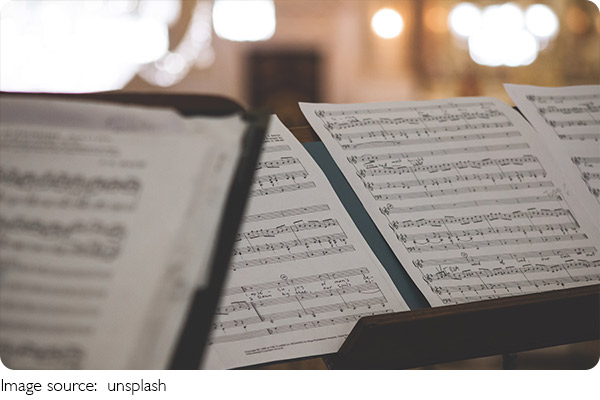Emotional Music

Music is often called the universal language because it has the power to transcend barriers of culture, language, and even time. But why does it have such an emotional impact on us?
How do certain melodies make us feel joy, sadness, nostalgia, or even excitement? The answer lies in how music, through its notes and melodies, can convey complex emotions.
In this article, we'll explore how composers and musicians use the tools of music—rhythm, melody, harmony, and dynamics—to translate complex emotions into sound. Whether you're a musician or simply someone who loves to listen to music, understanding how emotions are conveyed through music can enhance your experience of it.
The Role of Melody in Emotional Expression
When we listen to a piece of music, the first thing we often connect with is the melody. A melody can instantly evoke a specific emotion—whether it's a soaring, joyful tune or a melancholic, lingering phrase. How does this happen?
Melodies are the framework of a piece of music, and their structure plays a significant role in conveying emotion. A rising melody might signify hope, while a descending one can suggest sadness or despair. The intervals between the notes, the way they move from one to another, affect how we feel about them (Melodic Contour and Emotional Expression in Music, 2011).
For example, small intervals often create a sense of tension or anxiety, while larger intervals can convey feelings of freedom or triumph.
We can also think of a melody as a conversation—its shape can rise and fall in a way that mimics human speech. Just like in a conversation, the way a note "speaks" to the listener can evoke feelings of connection, vulnerability, or power.
Harmony: Creating Depth and Emotional Layers
While melody might be the most immediate emotional element in a piece of music, harmony provides depth and complexity. Harmony refers to the combination of different notes played together, creating chords that either complement or contrast with the melody.
The harmony we hear behind a melody can subtly influence our emotional response. For instance, a major chord is often associated with feelings of happiness or triumph, while a minor chord can evoke sadness or introspection. By shifting the harmony beneath a melody, musicians can take us on an emotional journey, layering different emotions within the same piece of music.
For example, a piece that starts with a joyful major chord progression may shift to a minor key, taking the listener from lightheartedness to melancholy. These emotional shifts happen all the time in music, and they reflect the complexities of human experience. Through harmony, we can feel both the light and dark sides of a story, all in one piece of music.
Rhythm: The Emotional Pulse of Music
Rhythm is another key element in how music conveys emotion. The speed (tempo) and pattern of beats can greatly influence how we feel about a piece of music. Fast, driving rhythms can make us feel energized or even anxious, while slow, steady rhythms can create a sense of calm or sadness.
For instance, think of a lively dance rhythm—it might make us want to get up and move, filling us with excitement. In contrast, a slow, deliberate rhythm might bring to mind a feeling of longing or melancholy. Rhythm also works in combination with melody and harmony to create a narrative within a song or piece of music, shaping the emotional landscape the listener experiences.
The Role of Dynamics: Shaping Intensity and Emotion
Dynamics refer to the volume of the music, and how it changes throughout a piece. The swelling of sound or the sudden drop to silence has a profound effect on how we perceive emotions in music. Soft, gentle passages may evoke vulnerability or tenderness, while loud, powerful moments often convey strength or passion.
For example, a dramatic crescendo—where the music gradually becomes louder—can create a sense of anticipation or excitement. Conversely, a sudden decrescendo or sudden quiet can bring about feelings of calmness, surprise, or even sorrow. The fluctuations in dynamics are one of the most direct ways music speaks to our emotions, guiding us through a spectrum of feelings.
Timbre: Color and Texture in Emotional Expression
Timbre, or tone color, refers to the quality or character of a sound—what makes the sound of a violin different from that of a piano, even if they're playing the same note. Different instruments or voices can evoke different emotions. A solo violin might bring out feelings of sadness or beauty, while the powerful sound of brass instruments can create a sense of boldness or drama.
The use of different timbres in music allows composers to "paint" with sound, evoking specific emotional textures. A gentle, warm flute sound might feel like a soft embrace, while the sharp, biting sound of a trumpet might bring a sense of urgency or anger. By mixing different timbres, composers can create a rich emotional landscape that resonates deeply with listeners.

Conclusion: Music as a Mirror of Emotions
At its core, music is an emotional language. Through melody, harmony, rhythm, dynamics, and timbre, musicians can create soundscapes that express the full range of human emotions. Whether it's the soaring highs of a triumphant melody or the deep lows of a melancholy harmony, music has the power to reflect our innermost feelings.
As listeners, we are invited into this emotional journey, experiencing joy, sadness, tension, and release—all through the simple yet profound language of music. So, the next time you listen to a piece of music, take a moment to notice how the notes, rhythms, and harmonies work together to convey emotion. What does the music say to you? What emotions does it awaken? Music is more than just sound—it's an emotional experience.
We'd love to hear your thoughts on this topic. What piece of music moves you the most? How do you feel when you listen to it? Feel free to share your experiences in the comments below!
-
 Why Museums MatterWhy Museums Matter: Even in the Digital Age, Here's Why We Still Choose to Visit Them in Person!
Why Museums MatterWhy Museums Matter: Even in the Digital Age, Here's Why We Still Choose to Visit Them in Person! -
 Wearable Art MovementWhat Are You Wearing—Clothes or Canvas? Discover How Fashion Has Become the New Frontier for Artistic Expression!
Wearable Art MovementWhat Are You Wearing—Clothes or Canvas? Discover How Fashion Has Become the New Frontier for Artistic Expression! -
 Color Meets CultureColor Meets Culture: How Our Backgrounds Shape the Tones We Love and the Meanings We Attach to Them.
Color Meets CultureColor Meets Culture: How Our Backgrounds Shape the Tones We Love and the Meanings We Attach to Them.